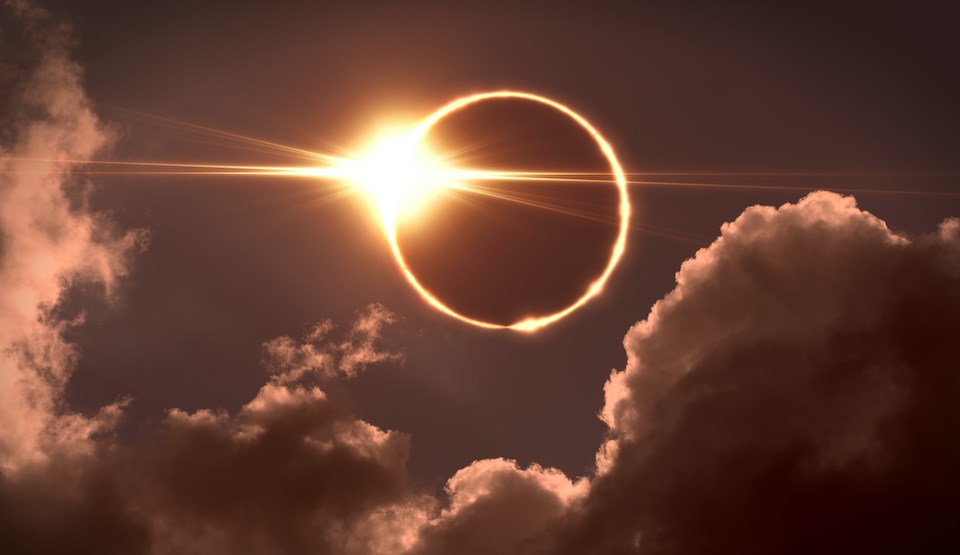A total solar eclipse will darken the sky across a large portion of North America on Monday, April 8 — but Metro Vancouverites won't see the full effect of the rare display.
Other parts of the continent will see the sky go completely dark as the moon moves in front of the sun. In the Greater Vancouver area, only about 17 per cent of the sun will be covered, according to H.R. MacMillan Space Centre astronomer Marley Leacock.
"People in Vancouver will be able to view the eclipse, though our view will be pretty minimal," she told V.I.A.
The partial solar eclipse will start at 10:43 a.m. on April 8 and reach its maximum coverage (17 per cent) at 11:30 a.m. The event will finish at 12:20 p.m. (view slide two for viewing details).
The total event will last one hour and 37 minutes.
Leacock says a solar eclipse occurs when the moon passes between the earth and the sun, blocking out light from the sun.
The sun will be in the southeastern sky when the eclipse starts and move south during the event.
The H.R. MacMillan Space Centre will host a by-donation viewing event and have eclipse glasses available. Weather permitting, it will have the viewing outside. If the weather does not cooperate, it will have a livestream of the event in the auditorium.
Will binoculars or a telescope protect my eyes from damage?
Sky-watchers must not look directly at the sun without adequate eye protection as it will cause instant, severe injury, Leacock said.
"You need special viewing glasses to observe the event directly, otherwise you will have to use an indirect method like a pinhole projector."
NASA advises using a camera lens, binoculars, or a telescope with a special-purpose solar filter secured over the front of the optics to view the event.
Regular glasses or sunglasses will not protect your eyes from sun damage. Use solar viewing glasses (eclipse glasses) or a safe handheld solar viewer. NASA notes that "safe solar viewers are thousands of times darker and must comply with the ISO 12312-2 international standard."
Before you use your special eclipse glasses or a handheld viewer, inspect them for tears, scratches or damage. Throw them away if they have been damaged. Supervise children who are using them to view the eclipse.
What should I do if I want to view the total solar eclipse but I live in Metro Vancouver?
NASA has a map that shows what areas will see the eclipse completely block the sun. Anyone located in the prime zone from Texas to Maine, will have a chance to see the total eclipse, weather permitting (view slide three).
The space agency notes that locations close to the centre of the paths will last longer than those near the outer edges of the path. The total eclipse will also be viewable in parts of Mexico and northeastern Canada.
Locals who plan to travel to view the rare event should ensure they are in prime spots on the eclipse's path. Locals can enjoy cheap flights from Vancouver International Airport (YVR) to New York, Montreal and Texas but they should book them soon.
Full solar eclipses occur every year or two or three, often in the middle of nowhere like the South Pacific or Antarctic. The next total solar eclipse, in 2026, will grace the northern fringes of Greenland, Iceland and Spain.
North America won’t experience totality again until 2033, with Alaska getting sole dibs. Then that’s it until 2044, when totality will be confined to Western Canada, Montana and North Dakota.
There won’t be another U.S. eclipse, spanning coast to coast, until 2045. That one will stretch from Northern California all the way to Cape Canaveral, Florida.
With files from the Associated Press


